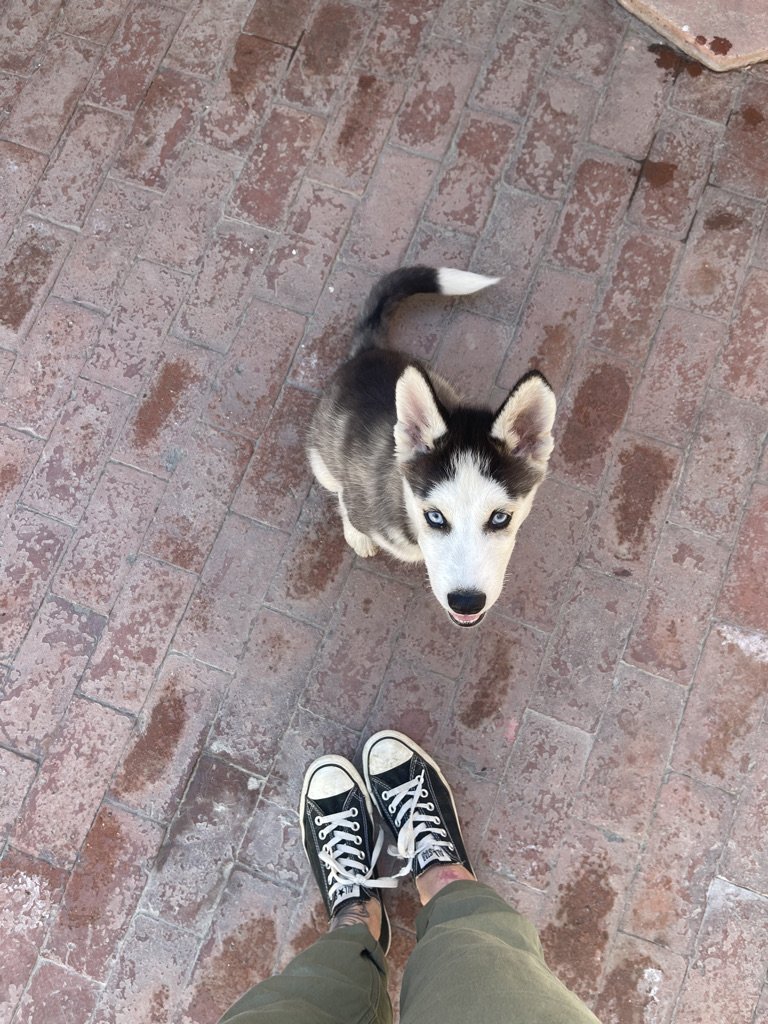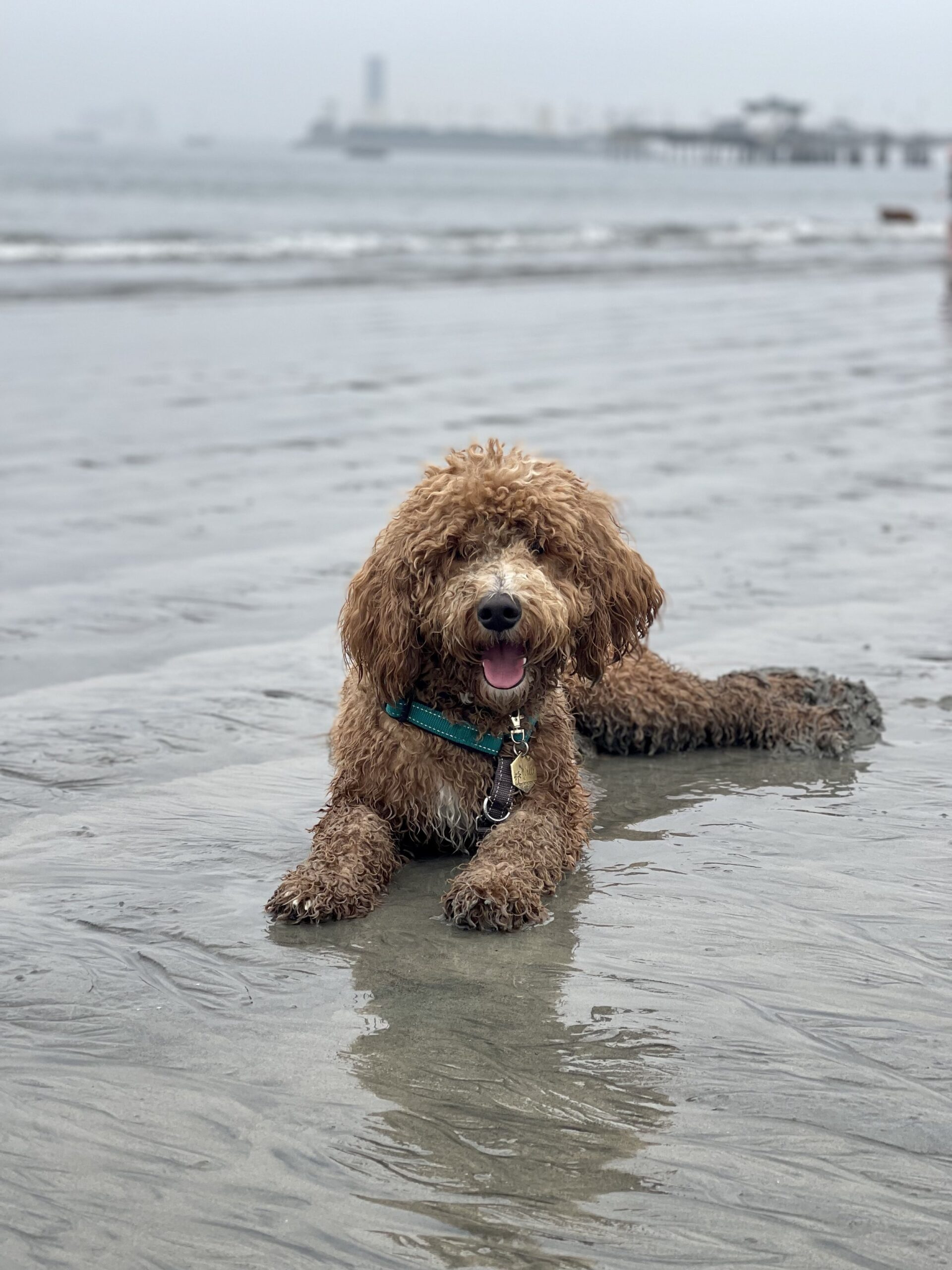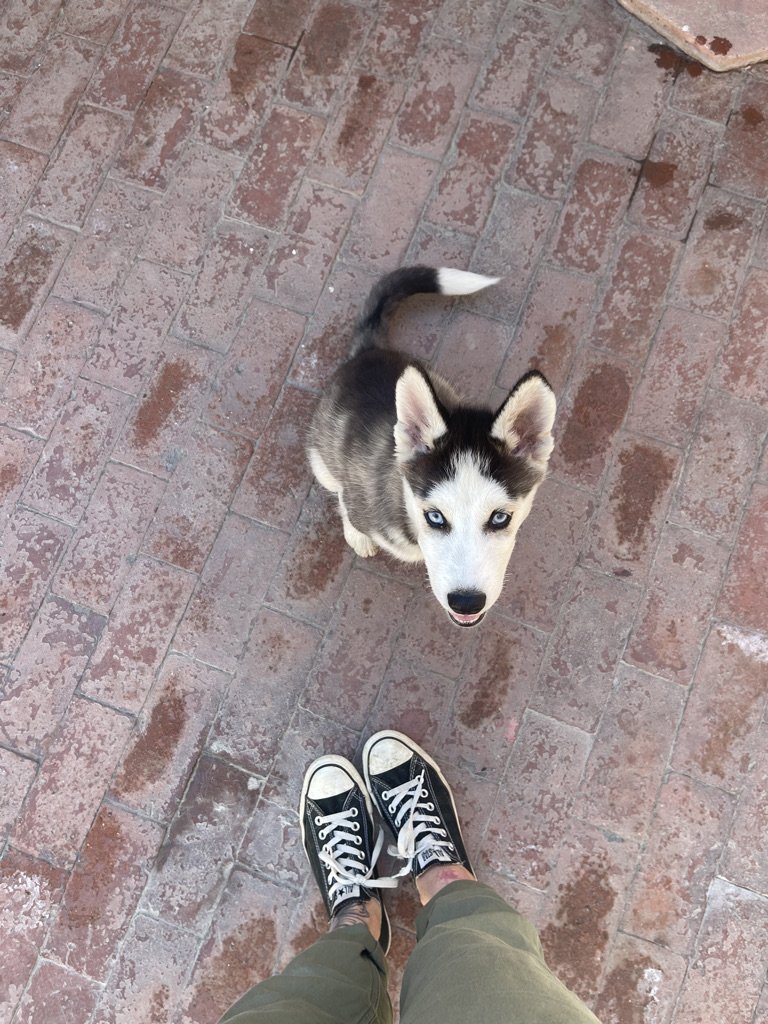What to expect in the first months with a puppy
If you recently welcomed a new puppy home, you hopefully have done your research, gotten a few puppy essentials, and are ready to tackle your first few days as a new puppy parent.
However, after bringing home a new puppy, many realize that although you can research and prepare, it is difficult to truly understand the immense love, joy, and unique challenges you experience during the first few months with a puppy.

;
Today, we will walk through a few resources we recommend to every new puppy parent, a guide to our puppy training package, and everything you can expect during the first few months with a puppy.
Let’s dive in!
What to expect: Management
We often start with management at the beginning of puppy training to help our dogs make good decisions and encourage them to avoid unwanted behaviors. Some management tools might be a crate, baby gate, pen, leash, harness, toys, and bones to keep our dogs busy.
If you haven’t done so already, make an appointment with your veterinarian for a complete physical examination, vaccinations, a fecal analysis, etc., for your puppy. Vaccinations must be completed in specific, timed intervals to be effective, so you won’t want to let your puppy get off schedule!
Resist the urge to take your puppy into uncontrolled environments until after your vet appointment. Most often, puppies should stay away from public places until after vaccines (4 months), but this can also serve as a problem for socialization, which is why we see so much fear and aggression in adult dogs! This is also a great time to look for certified trainers in your area offering programs like our Puppy Kindergarten. The sooner, the better to get your training going! Reach out if you need suggestions on how to find Puppy K Classes in your area!
What to expect: Day 1
If your household already has pets, we would recommend holding off on introducing your other pets to your new puppy until a certified trainer or additional information has stepped in to help.
Focus on potty training and reinforcing all good behavior with a treat. Take your puppy out every 20 minutes, keep them on a leash, give them a treat every time they go potty outside, and ignore and clean up any accidents. We do not punish accidents, as we don’t want to hurt our relationship with our puppy. Punishment has long been proven to NOT work. We try to keep words or cues (commands) to a minimum for the first week and allow the puppy to decompress. Treats are the best form of reinforcement (not verbal or toy).
Introducing puppies to the crate is very important and should be done multiple times daily. Make sure the crate is comfortable, with towels, instead of beds. Towels are best, as puppies can destroy expensive beds very quickly. Set up the crate in the living area, where the family is, where it’s warm and cozy and they’re not isolated. Toss treats in the crate many times a day, teaching the puppy this is the place to be, eventually shutting the door and tossing treats throughout the day. You may start by only putting the puppy in for 2-5 min, building healthy associations with the crate.
What to expect: Day 2-5
Start with logging the puppy’s behaviors.
Log all successes, accidents, unwanted behaviors, and wonderful behaviors. If your puppy has had no potty accidents in a few days, you can add 5 minutes to your schedule. This will help get your puppy on a schedule and do more of what we like. You can see where you need to work on finding replacement behaviors for some unwanted behaviors and reinforcing the wonderful behavior you’ve seen. Being organized is everything!
Focus heavily on reinforcing all the behaviors you want to see more of and ignoring the bad. We don’t just ignore the unwanted. Instead, we think of solutions to replace those “bad” behaviors. By reinforcing to the puppy that everything they do is something good, they will start offering more of this behavior and less unwanted behavior. You can begin to say their name. When they look, toss them a treat.
What to expect: Day 6-10
Your puppy is starting to feel comfortable and is probably doing normal puppy/dog behavior like chewing, accidents, nipping, and biting. This is 100% normal and should not be considered bad or scolded. Do not punish these behaviors, irritating as they are. Punishment will only cause the puppy to be confused and afraid of you or humans.
We focus on management, ensuring all of our favorite things are put away, cords are tucked away, and the puppy utilizes control when we’re not capable of watching them. We use a baby gate, pen, or crate when not watching them. Where they’re free, we want to redirect them from chewing onto a toy or puppy teething toy—always having things on hand.
What to expect: Day 10-14
By now, you’ve taught your puppy some great behavior just by simply reinforcing what you like. You can start adding a verbal cue to those behaviors that are now dependable.
Socialization should already be happening because, hopefully, your puppy is enrolled in a puppy socialization class. We often suggest our clients carry their puppies everywhere and take them in the car to all new places. We introduce them to all types of humans, big and small, with disabilities, sounds, environments, etc.
If your puppy is afraid, slow down and introduce it at a distance, where it can happily take treats while seemly curious. Bring high-value treats and do shorter training intervals. Let them drive around in the car with you.
Summary
So, to recap! The first months are, as explained, socialization, building healthy associations, vet visits, hiring a trainer, potty training, getting the puppy on a schedule, and reinforcing all good behavior.
You can expect more of the same during month two, teaching all the foundation behaviors inside the home without distractions and taking them to the yard.
In month three: the puppy should be four months and almost fully vaccinated. This is when you take training on the road, teaching the puppy all the behaviors with the help of a certified trainer out in the world.
Finally, you can begin maintaining and getting ready for adolescence in month four.

Are you still looking for some training help? See below for our puppy package details.
Underdogs Long Beach Puppy Package:
Our puppy package begins with a 45-minute consultation in which we review the puppy’s behavior history, health history, and background. We discuss puppy foundations such as potty and crate training, enrichment, management, and training goals and put together a personalized training enrichment and socialization plan! We also offer our Puppy Kindergarten class if you’re local!
Following the consultation:
-
10, 1 hr virtual or in-person training sessions
-
Personalized training plan virtually or in-person
-
A follow-up email with all you and your puppy learned, a training plan, and homework.
-
Two weekly homework check-in, via email, with feedback
-
Provided handouts and how-tos on all that you’ve learned!
-
Personalized training and enrichment plan.
- If local, admission to our Puppy Kindergarten class
Virtual training is particularly beneficial with puppy training, even if you aren’t geographically close to Long Beach, California! See our post here for the benefits of remote dog training.
Underdogs Long Beach uses force-free dog training methods to build relationships between dogs and owners.
© Underdogs long beach | Legal
